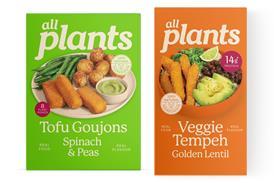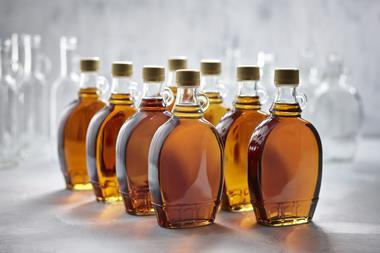While taste remains a key sales driver in food and drink, Marina Di Migueli, global marketing director – starch, protein & mouthfeel at Tate & Lyle explains why mouthfeel is so important in creating lasting impressions with consumers, encouraging repeat purchase.
With rising prices and more choice than ever, consumers are looking for more affordable products that don’t compromise on quality. And quality today means more than just taste or the familiarity of a trusted brand – it’s about how food and drink feel: the texture, the sensation, the mouthfeel.
The underestimated impact of mouthfeel
Mouthfeel plays a bigger role in consumer satisfaction than many brands realise. It’s central to how people judge product quality. When the texture feels right, products become more enjoyable – and drive repeat purchase. But if something feels off, consumers notice. And they might not come back.
Reformulating to be healthier – cutting sugar, reducing fat or adding functional ingredients – often affects mouthfeel. A low-fat yoghurt might feel thin. A reduced-sugar bar, dry. Even when consumers can’t pinpoint what has changed, they feel the difference. This creates a tension: how do you deliver on health without losing appeal?
Three ways mouthfeel adds value
Tate & Lyle believes there are three powerful ways brands can use mouthfeel to enhance value perception, without compromising on health or cost.
1. Balance cost with sensory appeal
Managing cost is essential for many brands, but it’s important the sensory quality that consumers value remains intact. Tate & Lyle helps teams find that balance.
Take mayonnaise. One producer needed to reduce fat and costs. We reformulated using a combination of our functional ingredients, including speciality starches, achieving a 30% cost reduction while keeping the creamy texture consumers loved. The result? A healthier product that stayed satisfying, indulgent and commercially viable.

2. Reformulate for cleaner labels
Clean labels matter. More consumers want simple, recognisable ingredients, without compromising on texture.
We helped a leading yoghurt brand reformulate their product to remove traditional stabilisers and achieve a cleaner label. By using a combination of our clean-label tapioca starches – declared simply as ‘starch’ or ‘tapioca starch’* – we preserved the yoghurt’s creamy, indulgent mouthfeel while meeting consumer expectations for transparency. The reformulation didn’t just conform to regulations; it elevated the sensory experience and strengthened the brand’s positioning.
Clean labels and satisfying texture aren’t competing goals. With the right ingredient strategies, they work together to deliver food that’s both wholesome and enjoyable. When consumers see a simple label and taste a familiar, indulgent texture, they feel reassured – and are likely to return.
3. Create new textures that drive engagement
Innovative mouthfeel solutions can set a product apart in competitive categories, offering new sensory experiences that captivate consumers. Through formats like hyper crunch, aerated layers and multi-layered textures, brands can offer new sensory experiences that reinforce their positioning and engage curious consumers.

Unique textures don’t just attract attention. They encourage trial and repeat purchase. A stand-out example is the viral strawberry sandwich from M&S. Soft Japanese-style ‘shokupan‘ bread, fresh strawberries and a creamy filling created a light, indulgent experience that became a social media hit. The appeal? Mouthfeel.
Tate & Lyle worked with a customer to bring more crunch to their gluten-free snacks – solving a common challenge in replicating texture without gluten to trap air bubbles. By combining one of our functional starches with a specially selected chickpea flour, we helped them deliver the crisp, satisfying bite their consumers expect.
These moments of delight aren’t incidental. They’re carefully formulated. And they matter. Products that surprise and satisfy through texture can break through clutter, drive trial, and build loyalty.
Discover in the video below why mouthfeel is more powerful than you think – and how it can transform product performance in this video with John Stewart – VP global platform – starches & proteins, and Will Ballantyne, technical service director – Europe:
Healthier doesn’t mean less satisfying
It’s a common belief that healthier means less indulgent experience. But it doesn’t have to be that way.
Using the right combination of starches, fibres and hydrocolloids, Tate & Lyle helps brands to replicate the creamy, rich textures consumers expect, even when fat or sugar are reduced. The result: healthier options that still deliver on satisfaction.
We partnered with a manufacturer to reduce sugar by 25% and fat by 50% in their ice cream – using clean-label ingredients like citrus fibre and corn fibre to keep the creamy mouthfeel, slow melting, and deliver indulgent taste without compromise.

Reformulating for value, relevance, and trust
As the definition of value evolves, so must the way we formulate.
Taste, texture, health and affordability all matter. But it’s mouthfeel that often shapes lasting impressions. Brands that get this balance right won’t just meet expectations, they’ll build trust and loyalty.
Recent insights from Kantar show that consumers are willing to invest in products that deliver tangible benefits – better taste, better nutrition, better texture [Kantar]. It’s not just about being cheaper or cleaner. It’s about delivering real value through every bite.
Want to explore how mouthfeel can elevate your next reformulation? Unlock the potential of your products with cutting-edge insights and strategies. Download our The Future of Mouthfeel report for practical strategies that bring wellness and wow factor together.
* ‘Starch’, or ‘tapioca starch’ in Europe, and in the UK, it can also be labelled ‘tapioca flour’. Regulatory analysis is the responsibility of the food producer. Nutritional regulation and labelling vary from country to country: we recommend reviewing your local regulation.
















